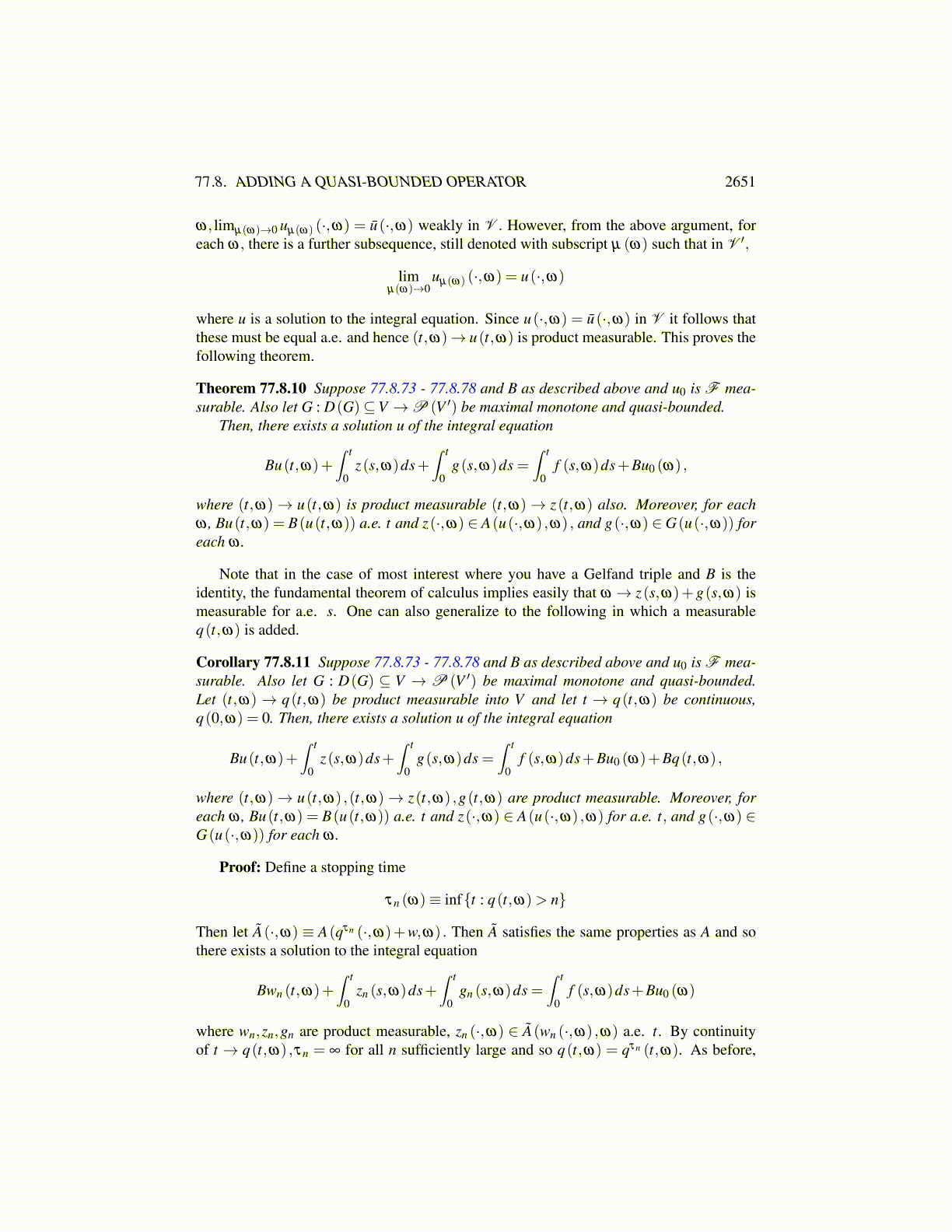
77.8. ADDING A QUASI-BOUNDED OPERATOR 2651
The last term in the sum being bounded follows from the integral equation and the funda-mental theorem of calculus along with the boundedness f ,gµ ,zµ . In addition to this, theestimate 77.8.86 implies
limµ→0
∥∥Jµ uµ −uµ
∥∥V= 0. (77.8.90)
There is a subsequence, µ → 0 still denoted as µ such that
gµ → g weakly in V ′ (77.8.91)
zµ → z weakly in V ′ (77.8.92)
uµ → u weakly in V (77.8.93)
Jµ uµ → u weakly in V (77.8.94)(Buµ
)′→ (Bu)′ weakly in V ′ (77.8.95)
Buµ (t)→ Bu(t) weakly in V ′ (77.8.96)
Now consider two of these for µ and ν . Subtract and act on uµ −uν . Then one obtains
⟨Buµ −Buν ,uµ −uν
⟩(t)+
∫ t
0
⟨zµ − zν ,uµ −uν
⟩+∫ t
0
⟨gµ −gν ,uµ − vν
⟩= 0 (77.8.97)
Consider that last term for t = T . It equals
∫ T
0
⟨Gµ uµ −Gν uν ,uµ −uν
⟩=
≥0︷ ︸︸ ︷∫ T
0
⟨Gµ uµ −Gν uν ,Jµ uµ − Jν uν
⟩+∫ T
0
⟨gµ −gν ,uµ − Jµ uµ − (uν − Jν uν)
⟩=∫ T
0
⟨gµ −gν ,Jµ uµ − Jν uν
⟩+ ε (µ,ν)
where
|ε (µ,ν)| ≤(∫ T
0
(∥∥gµ
∥∥+∥gν∥)p′)1/p′(∫ T
0
(∥∥uµ − Jµ uµ
∥∥+∥uν − Jν uν∥)p)1/p
≤ 2C(∥∥uµ − Jµ uµ
∥∥V+∥uν − Jν uν∥V
)Adjusting constants and using 77.8.87,
≤C(
µ(1−(1/p))+ν
(1−(1/p)))
Thus ∫ T
0
⟨Gµ uµ −Gν uν ,uµ −uν
⟩=∫ T
0
⟨gµ −gν ,Jµ uµ − Jν uν
⟩+ ε (µ,ν)